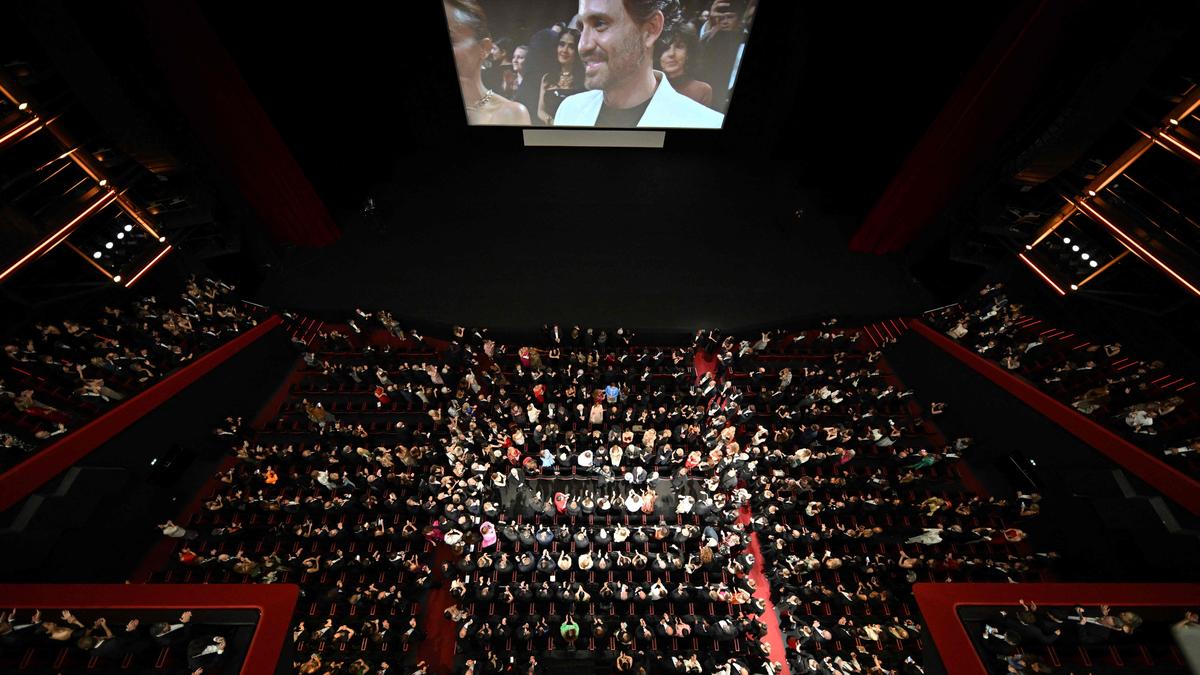
Cannes 2024: Standing ovations are getting out of hand, here’s how 2024 has fared so far
The Hindu
The Cannes Film Festival's standing ovations are a cultural barometer, with films like The Substance receiving 11 minutes of applause.
Every May, the world’s cinephiles turn their eyes to the French Riviera, where the Cannes Film Festival unspools its red carpet for a parade of filmmakers, stars, and industry insiders. Over the past week, a certain ritual seems to have captured the essence of nearly every headline tying into the storied event, yet again: the standing ovation.
The significance of a standing ovation at Cannes goes beyond the immediate reaction to a film. It has become a cultural barometer, a signal to the world about the film’s impact, and an unofficial competition for the longest, loudest tribute. In 2024, this long-standing (pun intended) tradition continues to provoke fascination and debate, with each film’s reception measured in minutes of applause, much like a sport. But what does it really mean? Is it a genuine measure of a film’s merit, or just a reflection of festival dynamics and the art of the schmooze?
The origins of this practice are murky, but the phenomenon gained notoriety in the early 2000s with moments like the 22-minute ovation for Guillermo del Toro’s Pan’s Labyrinth in 2006 and the 20 minutes for Michael Moore’s Fahrenheit 9/11 in 2004. These marathon clapping sessions became the stuff of festival lore, influencing the films’ trajectories far beyond the Croisette.
Examining the ovation records for recent Palme d’Or winners reveals an intriguing, if somewhat unpredictable, metric of audience enthusiasm. Justine Triet’s Anatomy of a Fall (2023) was met with a respectable seven-minute standing ovation. Ruben Östlund’s Triangle of Sadness (2022) fared slightly better, eliciting eight minutes of applause. Julia Ducournau’s audacious Titane (2021) pushed the ovation clock to a full ten minutes and Bong Joon-ho’s masterful Parasite (2019) received a more restrained five-minute ovation.
Fast forward to the present, and the tradition doesn’t seem to have evolved. Cannes audiences have become just about as adept at timing their applause as they are at identifying auteur cinema. The standing ovation has morphed into a rite of passage, embedded in the festival’s DNA. Critics argue that the length of an ovation is about as reliable as a weather forecast in Cannes and it wouldn’t be too cheeky to suspect that the thunderous applause echoing through the Palais des Festivals stems from a collective dread of being left out of the zeitgeist. Yet, the ovation does provide a visceral, immediate gauge of the audience’s collective mood.
Timing an ovation is more art than science. Different outlets use various methods (which explains the different counts): some start the clock when the credits roll, others wait until the house lights come up. Some even time the ovation from the moment attendees rise to their feet, stopping when the applause subsides or the filmmaker begins to speak. Discrepancies are inevitable, yet the pursuit of precision continues.
But beyond the timing, the composition of the audience influences the ovation. Cannes premieres are attended by a mix of critics, industry insiders, high-profile guests, and most recently, a horde of frustratingly aloof social media influencers. But more often than not, their applause may be more about celebrating the event or the celebrities in the room rather than the film’s artistic merit, with big names and legendary directors often enjoying longer ovations.











